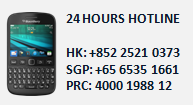Salmonella in soya bean meal
| Cargo claims submitted by the receivers of soya bean meal shipped from South America to European ports in respect of alleged infection by salmonella. Similar claims have been made against Members of other International Group Clubs. Claims from Italian receivers are in respect of costs incurred as a result of storing, transporting and re-conditioning allegedly affected consignments of soya bean meal in bulk. The consignments were from Argentinian and Brazilian ports and were destined for discharge in Italy, for delivery to other European countries. It has been suggested that the source of the contamination was bird and rodent faeces affecting the cargo, either at the storage facility/silo prior to loading, or during loading on board when the cargo is transported to the vessel by trucks and elevators. Generally, animal foodstuffs imported into the European Union require certain forms of treatment (such as pelletising) to minimise the risk of introducing diseases or infections. It should be remembered that not all types of salmonella pose a danger and therefore not all cargoes with a suspected salmonella infection would require such extensive treatment by receivers, who may then seek to pass on this cost to the ship owner Member. The effectiveness of taking samples prior to loading in order to as certain the presence of salmonella. Any salmonella infection is likely to be present in a small area in one part of the cargo prior to loading and would then spread to a wider area through out the cargo hold during a lengthy ocean voyage. Therefore, a representative sample taken at time of loading, either ashore or on-board, is unlikely to be conclusive. Indeed the issuance of a 'salmonella free' certificate following such a sample could be prejudicial to the defence of any subsequent claim for contamination. Furthermore it should be borne in mind that a laboratory analysis of cargo samples taken prior to loading may not be available before the ship sails, there by preventing Shipowners from taking any remedial before the commencement of the voyage. Accordingly, despite the source of the contamination almost certainly being at the load port, it is unlikely that any practical, preventative action can be undertaken and it may well be that expert attendance upon discharge is the most effective assistance that can be given. Source : Britannia - Risk Watch |





